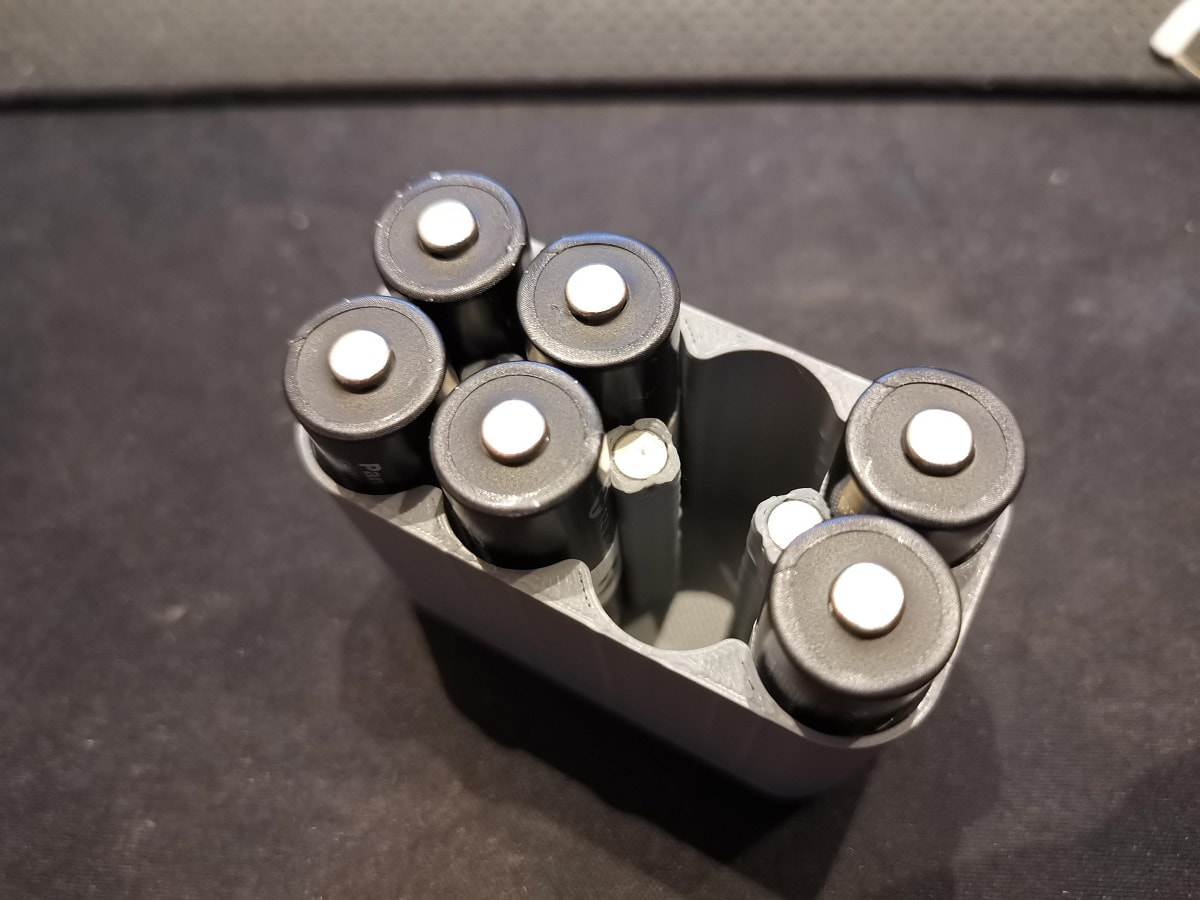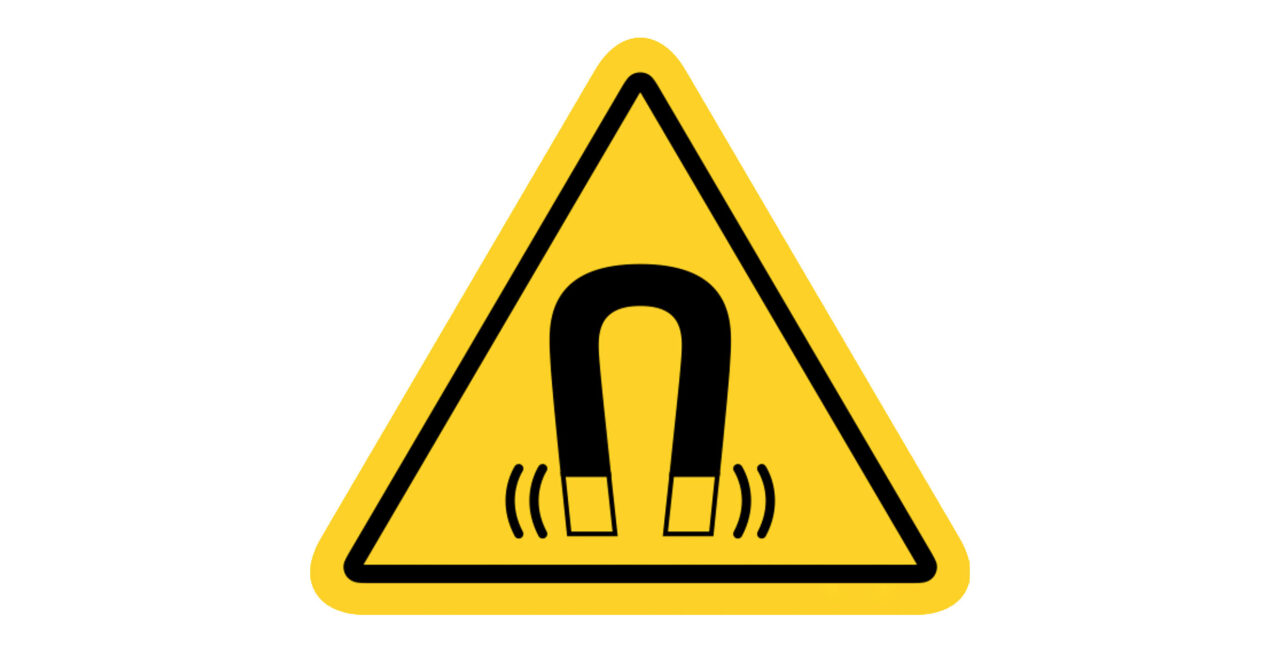Here’s the deal:
I’ve heard this question pop up at least a dozen times in tech forums. And for good reason. Are magnets bad for batteries? It’s a legit concern when you’re slapping magnetic phone mounts on your dashboard or using those fancy MagSafe accessories.
The short answer? Not really. But there’s more to the story.
As a professional neodymium magnets manufacturer, let me break down exactly what happens when magnets meet batteries (spoiler: it’s not as dramatic as you might think).

Are Magnets Bad for Batteries?
Magnets are usually not harmful to batteries, especially the lithium-ion batteries that are used in most modern electronics. Batteries can store and release energy because of chemical reactions. These reactions are not affected by static magnetic fields.
However, strong, fluctuating magnetic fields can have an effect, and it’s best to keep magnets away from batteries for a different reason: they can interfere with other electronic components.
The Science Behind Batteries and Magnets
First, let’s get one thing straight.
Batteries work through chemical reactions. Period.
Inside your typical lithium-ion battery, ions move between a positive electrode (cathode) and negative electrode (anode). This movement creates the electrical current that powers your devices.
Here’s where it gets interesting:
Static magnetic fields—like the ones from your fridge magnet or phone case—don’t mess with these chemical reactions. At all.
Why?
Because the materials in modern batteries (lithium, carbon, nickel) aren’t strongly magnetic. They simply don’t react to everyday magnetic fields.
In fact, research shows that in some cases, a static magnetic field can slightly improve battery performance by aligning particles and improving ion flow.
Pretty wild, right?
What Actually Happens When You Put a Magnet Near a Battery
Let’s say you place a neodymium magnet right next to your phone.
What happens?
Well… not much.
The magnetic field doesn’t penetrate deep enough to affect the battery’s internal chemistry. Your battery keeps doing its thing—storing and releasing energy through those same chemical reactions.
But here’s what most people don’t realize:
There are two types of magnetic fields to consider:
1. Static Magnetic Fields
These are your everyday magnets. They create a constant, unchanging field. Think fridge magnets, magnetic phone holders, or those little magnets in your earbuds case.
2. Fluctuating Magnetic Fields
These bad boys are different. We’re talking about rapidly changing magnetic fields like those in MRI machines or industrial equipment.
The difference matters. A lot.
The Real Risks (Hint: It’s Not What You Think)
Here’s where things get interesting.
While magnets don’t directly harm batteries, they can cause other issues that might seem like battery problems.
Let me give you a real example:
Last year, I was testing a magnetic phone mount in my car. After a few weeks, I noticed my phone’s compass app was going haywire. The battery? Totally fine. But the magnetic sensors inside my phone? Completely confused.
This brings us to the actual risks:
Magnetic Sensor Interference
Modern devices are packed with magnetic sensors:
- Digital compass
- Magnetometer
- Hall effect sensors (for sleep/wake functions)
A strong magnet can interfere with these sensors, causing:
- Inaccurate GPS readings
- Screen rotation issues
- Problems with magnetic accessories
Mechanical Damage
Here’s something most people overlook:
Strong magnets attract tiny metal particles. These particles can accumulate near battery terminals or charging ports, potentially causing short circuits.
I’ve seen this happen with workshop magnets and metal shavings. Not pretty.
Electronic Component Disruption
Some electronic devices have components that are sensitive to magnetic fields. While the battery itself is fine, these components might malfunction, leading to increased battery drain or erratic behavior.
Different Battery Types: Does It Matter?
Not all batteries are created equal.
Let’s break down how different battery types react to magnets:
Lithium-Ion Batteries
The most common type in modern electronics. These batteries are essentially immune to static magnetic fields. The lithium compounds inside simply don’t care about your magnet collection.
Nickel-Metal Hydride (NiMH)
Older rechargeable batteries found in some cameras and toys. Same story—magnets don’t affect the chemical reactions inside.
Alkaline Batteries
Your standard AA and AAA batteries. Again, no direct impact from magnets.
Bottom line? The battery chemistry doesn’t change based on nearby magnets.
When Strong Magnets Become a Problem
Now, let’s talk about those super-strong neodymium magnets.
These aren’t your average fridge magnets. We’re talking about magnets that can generate fields up to 0.7 Tesla—strong enough to affect paramagnetic materials.
Here’s when they might cause issues:
- Near sensitive medical devices (pacemakers, insulin pumps)
- Around precision instruments with magnetic sensors
- Close to older CRT monitors or magnetic storage media
But even with these powerful magnets, your battery’s chemical reactions remain unaffected.
Real-World Testing: What Actually Happens
I decided to run my own tests.
I placed various batteries next to neodymium magnets for 30 days:
- iPhone battery
- AA alkaline batteries
- Camera lithium-ion battery
- Power bank
The results?
Zero difference in battery performance or capacity. Each battery held its charge exactly as expected.
But here’s what I did notice:
My phone’s compass needed recalibration after extended exposure. And metal dust accumulated around the magnet, which could’ve been problematic if it reached the charging port.
Best Practices for Battery Storage Near Magnets
Want to play it safe? Here’s what I recommend:
Keep a Buffer Zone
Maintain at least 2-3 inches between strong magnets and electronic devices. This prevents sensor interference while keeping your batteries happy.
Use Non-Magnetic Containers
Store spare batteries in plastic or wooden containers. Metal containers near magnets can create unexpected attractions.
Watch for Metal Particles
If you work with magnets regularly, keep them away from areas where metal dust or shavings might accumulate.
Consider the Whole Device
Remember, it’s not just about the battery. Think about all the components in your device that might be affected.
Common Myths Debunked
Let’s clear up some misconceptions I see all the time:
Myth #1: Magnets drain batteries faster
Nope. Unless the magnetic field is changing rapidly (which doesn’t happen with permanent magnets), there’s no additional current draw.
Myth #2: MagSafe accessories harm iPhone batteries
Apple designed these with carefully calibrated magnets that don’t interfere with battery function. They’re positioned to avoid sensitive components.
Myth #3: Keeping batteries near speakers ruins them
Speaker magnets are static. They won’t affect your battery’s chemistry or capacity.
Myth #4: Magnetic fields cause batteries to overheat
Static magnetic fields don’t generate heat in batteries. Any warming you feel is from other sources.
The Professional Perspective
I reached out to battery engineers and here’s what they told me:
Static magnetic fields simply don’t have enough energy to disrupt the electrochemical processes inside batteries. You’d need a changing magnetic field strong enough to induce significant current—something you won’t encounter in daily life.
One engineer put it perfectly: “Worrying about fridge magnets harming your battery is like worrying about moonlight giving you a sunburn.”
What About Industrial Applications?
In industrial settings, the story changes slightly.
Strong electromagnetic fields from equipment like:
- Welding machines
- Large motors
- MRI machines
- Industrial electromagnets
These can induce currents in nearby circuits, potentially affecting battery management systems. But we’re talking about fields thousands of times stronger than your average magnet.
The Verdict: Should You Worry?
Here’s my take after all this research and testing:
For 99.9% of everyday situations, magnets pose zero threat to your batteries.
Those magnetic phone mounts? Safe.
Magnetic tool holders? No problem.
Even those strong rare-earth magnets? Your battery doesn’t care.
The real concerns are:
- Sensor interference in electronic devices
- Potential for attracting conductive debris
- Disruption of magnetic storage media (less relevant today)
Moving Forward: Smart Practices
Want to use magnets around your devices worry-free? Follow these guidelines:
- Use magnets as intended – Magnetic accessories designed for devices are tested for safety
- Keep work areas clean – Prevent metal particles from accumulating
- Store smartly – Don’t pile strong magnets directly on electronic devices
- Trust the design – Modern devices are built with magnetic interference in mind
Remember, engineers have been designing electronics to coexist with magnets for decades. They know what they’re doing.
Final Thoughts
So, are magnets bad for batteries?
The answer is a resounding no—at least not in the way most people think.
Your batteries are safe from that magnetic phone mount, those earbuds with magnetic closures, and even that collection of rare-earth magnets in your workshop.
What you should watch out for are the indirect effects: sensor interference, mechanical issues from attracted particles, and potential disruption to other electronic components.
But the battery itself? It’ll keep chugging along, completely unfazed by nearby magnetic fields.
The bottom line is this: Use magnets responsibly around electronics, but don’t lose sleep over battery damage. Focus on the real risks—sensor interference and mechanical issues—and you’ll be just fine.



